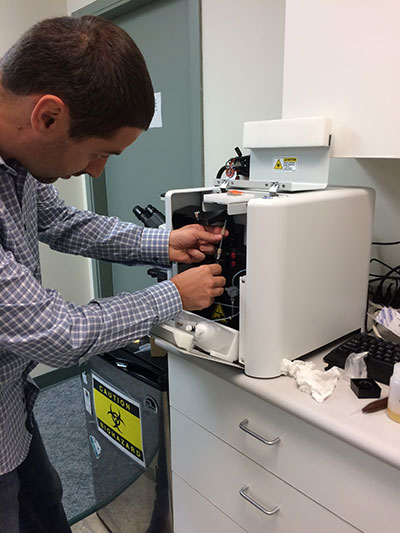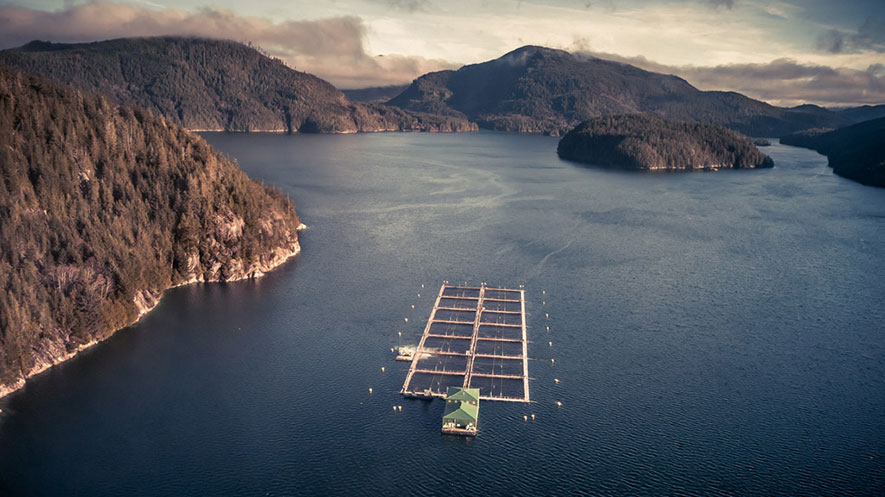In 2016, 23 million salmon died from a Harmful Algal Bloom (HAB) at a farm in Chile. The economic cost of that die-off is estimated to have been $800 million. The impact of such mortality events is serious, but one international seafood company is employing cutting-edge technology to expand monitoring, stay ahead of HABs, and keep their fish stocks healthy.
Grieg Seafood plans to use the FlowCam to make more informed decisions around HAB monitoring. They have the experience and the judgement to make the right calls. What they need is more data.
Historically, Grieg has used manual microscopy to identify and count algae to determine if there was a need to employ mitigation strategies. On any given day, there could be upwards of 100 species of algae, and using manual microscopy can be like trying to find a needle in a haystack. The quality of the analyzed data is not consistent, and the process is prone to error.
“HABs move quickly,” says Dean Trethewey, Seawater Production Director at Grieg Seafood, “the ocean is an ever-changing environment; for us it is not a matter of if we see HAB’s, but when. HABs can have an impact on our stocks causing reduced feed rates and even mortality. As climate change identifies increasing algae species, we need to adapt to this new environment more quickly.”
 Bogdan Vornicu, Environmental Monitoring Manager for Grieg Seafood, uses the FlowCam 8400 instrument during onsite training. Photo credit: FlowCam.
Bogdan Vornicu, Environmental Monitoring Manager for Grieg Seafood, uses the FlowCam 8400 instrument during onsite training. Photo credit: FlowCam.
There are approximately 14 species of algae that are harmful to salmon in British Columbia, and harmful at different concentrations. Some are outright toxic, while others produce a mechanical irritant. Grieg is looking to develop early warning programs for staff to study water quality and improve their ability to predict harmful algae populations before they bloom. To accomplish that requires huge amounts of field data and information.
Ten years ago, the University of Victoria purchased a FlowCam to study the phytoplankton community composition. The University of Victoria provided Grieg with external validation of the data collected and analyzed at the fish pens. And what they found was too many false positives to support confident mitigation.
With their purchase of a FlowCam, Grieg will have more accurate and reliable data regarding the presence of harmful algae, and will be able to better determine when and where to enact mitigation strategies. Grieg will continue to use manual microscopy to detect algae, but will accompany and verify their manual analysis with the FlowCam. By having confidence in sampling, Grieg will be able to make better decisions about feeding or not feeding. And having more accurate data regarding the presence of harmful algae will also help Grieg save time and money by helping determine when and where to actively pursue mitigation strategies.
It is Grieg’s hope that the additional support of the FlowCam analysis will provide more confidence behind the decision to feed or not feed, provide more accurate and reliable data, and remove the subjective component from the decision process. A training program will be developed to help staff learn to use the FlowCam and its data to make informed decisions on HAB action or inaction.
Grieg plans to develop a quality assurance program that will provide more accuracy to their algae identification and enumeration techniques. Ideally, they will be able to consistently review samples, and verify accuracy so they can compare from site to site across different time periods. The local sites will gradually become better at identifying more harmful algae species if they can get external validation. This was at the heart of Grieg’s decision to purchase 3 FlowCams. The instruments will be deployed in British Columbia and Scotland.
There are plans in place to build a detailed catalog for training purposes and develop systems around enumeration. The goal is to train staff to make decisions based on quality data. The sample validation provided by the FlowCam will offer assurance in the counting and monitoring of HABs.
“Grieg joins Marine Harvest and Cermaq – both based in British Columbia, and Plancton Andino in Chile, as users of our technology in our growing customer base in the global salmon aquaculture industry,” says Harry Nelson, VP of Aquatic Markets at Fluid Imaging.
Grieg Seafood ASA has fish farms in Norway, Canada, and, Scotland. Their purchase of 3 FlowCams® represents the 6th sale in the past year into the salmon aquaculture industry.
Fluid Imaging Technologies, Inc. manufactures industry-leading particle analysis instrumentation based on digital imaging technology. Its flagship product, the FlowCam®, is the first automated particle analysis instrument to use digital imaging for measuring size and shape of microscopic particles in a fluid medium. With applications in oceanographic research, municipal water, biopharmaceutical formulations, chemicals, oil and gas, biofuels and many other markets, Fluid Imaging Technologies continues to lead the way in imaging particle analysis. For more information, click here.





